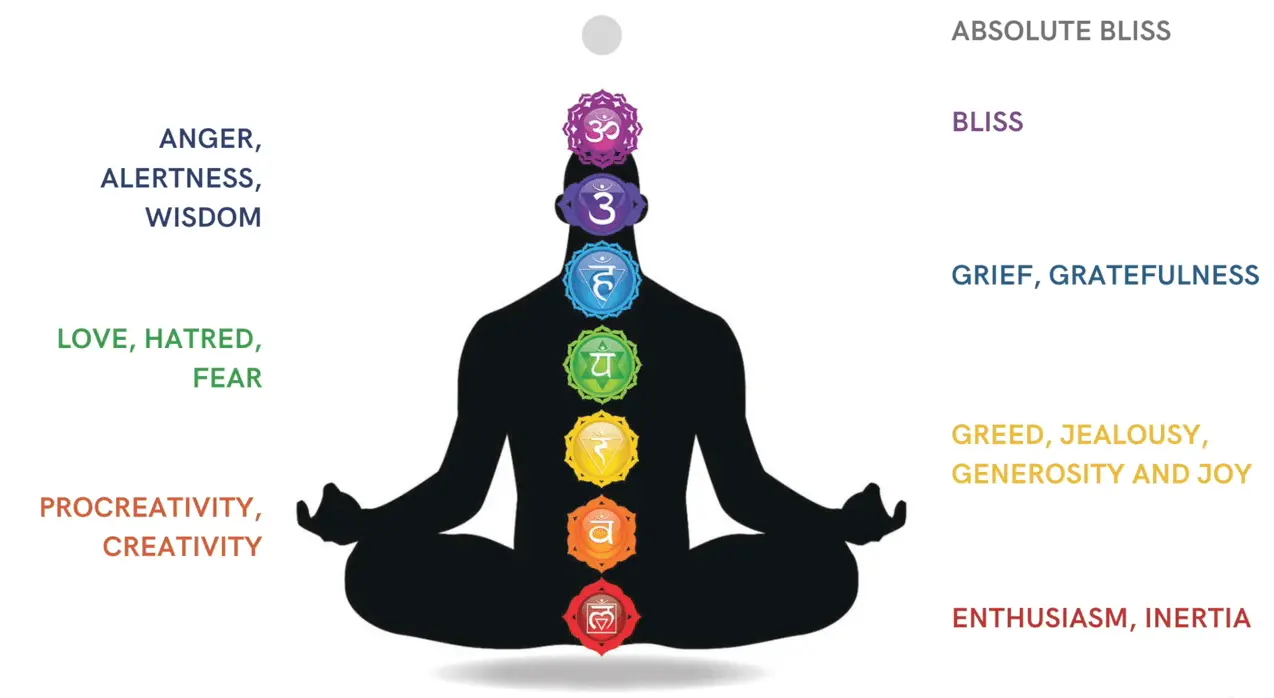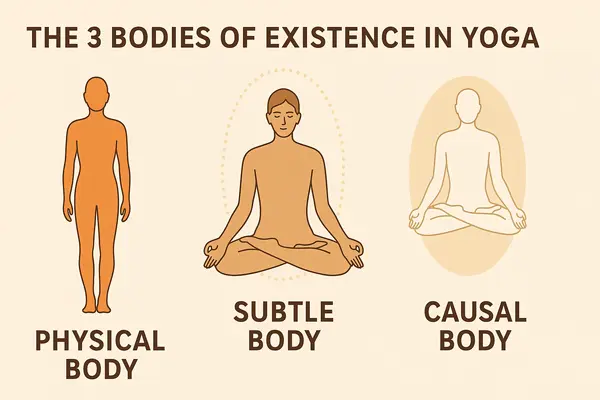In this blog, we will go through the 7 chakras in yoga, first briefly and then in detail. We will cover the essential insights about the chakras, and also which yoga exercises activate which chakra.
Chakra refers to the wheel. People also say nerve centres or plexus. Out of 109 Chakras, 7 Chakras are of primary importance. When energy, kundalini or consciousness flows through these centres, there are different types of feelings, emotions, and sensations one experiences. Remember, it is the same energy taking various forms. There are no different energies.
Whatever you feel through your body is vibrations. You go through inertia, hatred, jealousy, happiness, and so on. You get carried away. One can never handle a vibration with a vibration. It will come back again. If you want to reduce the vibrations, then you have to tap into something that has no vibrations. That is Zero or nothingness.
On the internet, you will encounter so many articles that talk about the shape, size, colour, and petals of chakras. It’s vital to go beyond all of this. One has to be careful while reading or teaching about the chakras. The problem is people get carried away with all the shapes, sizes, etc, and miss the main point.
Pranas flows through the nadis. There are three main nadis out of thousands of nadis. Ida, pingala, and Shushumna. Ida runs through the left nostril, Pingala runs through the right nostril, and Shushumna runs through the spinal cord.
The blockage of the Chakra causes abnormal physiology inside the body.[1]
7 Chakras in Yoga Briefly
1. Mooldhara or Root Chakra denoting Enthusiasm and Inertia
2. Swadishthana Chakra- Procreativity and creativity
3. Manipura Chakra -Greed, Jealousy, Generosity, and Joy.
4. Anahata Chakra- Love, Hatred, and Fear.
5. Vishuddhi Chakra- Grief and Gratefulness
6. Agya Chakra- Anger, Alertness, and Wisdom
7. Shahara Chakra- Bliss
Beyond this is Absolute Bliss. which is also called the yapini chakra
Yapini Chakra– Bliss absolute
7 Chakras in Yoga in Detail
1. Muladhara or Root Chakra
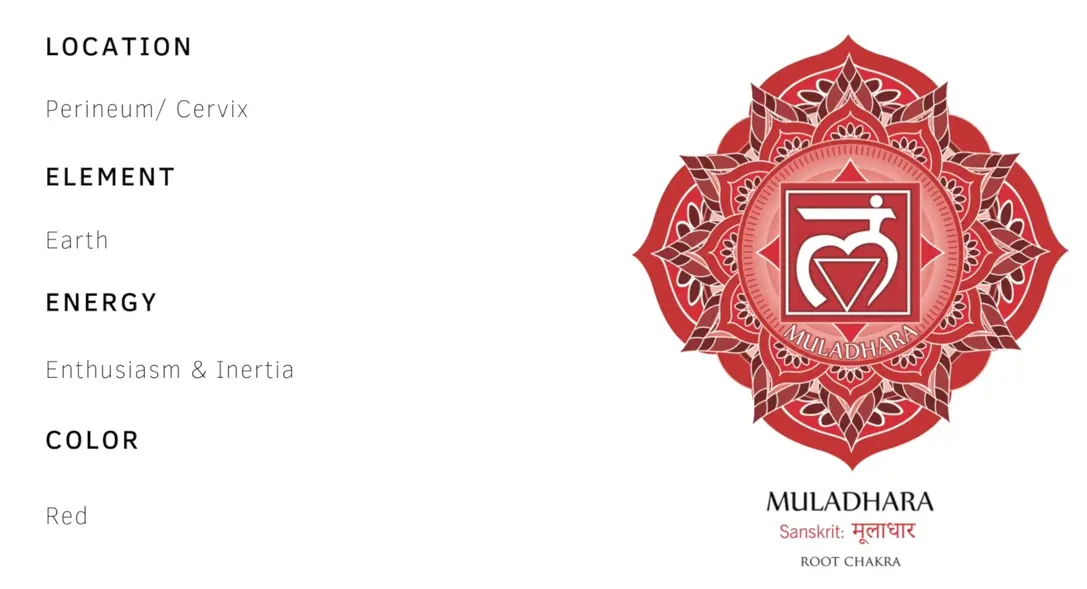
Location – base of the spine, the perineum or cervix.
Element – It is represented by the element Earth.
Energy – Enthusiasm, Inertia
Steady Energy of Muladhara– One feels super enthusiastic or on top of the world when the energy is steady and balanced in Muladhara Chakra.
Unsteady Energy of Muladhara– One doesn’t feel like doing anything; it’s a state of inertia.
A person functioning at the muladhara chakra will immediately say NO to everything you say.
2. Svadhishthana or Sacral Chakra
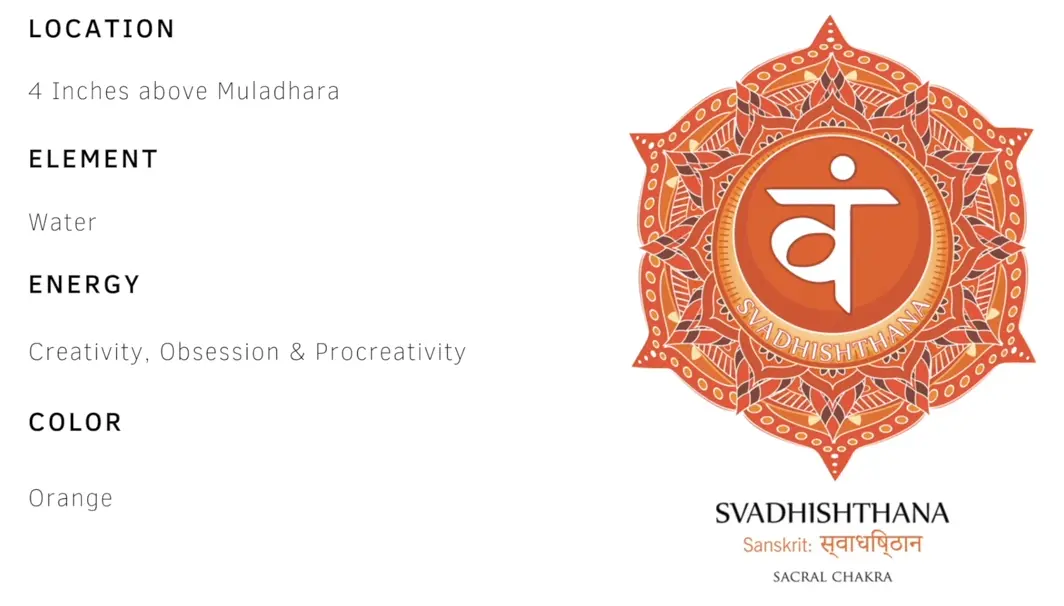
Location – Located 4 inches above the Muladhara Chakra.
Element – Water Element
Energy – Creativity, Obsession, and procreativity
Steady Energy of Svadhishthana–
Steadiness of Svadishthana brings creative out-of-the-box ideas or experiences.
Unsteady Energy of Svadhishthana–
A person with an unsteady Svadishthana will be obsessed with the five senses. When people overindulge in sex or masturbation because they have no control over their senses, or in other words, svadishthana is unbalanced.
3. Manipura Chakra (Navel or Solar-Plexus Chakra)
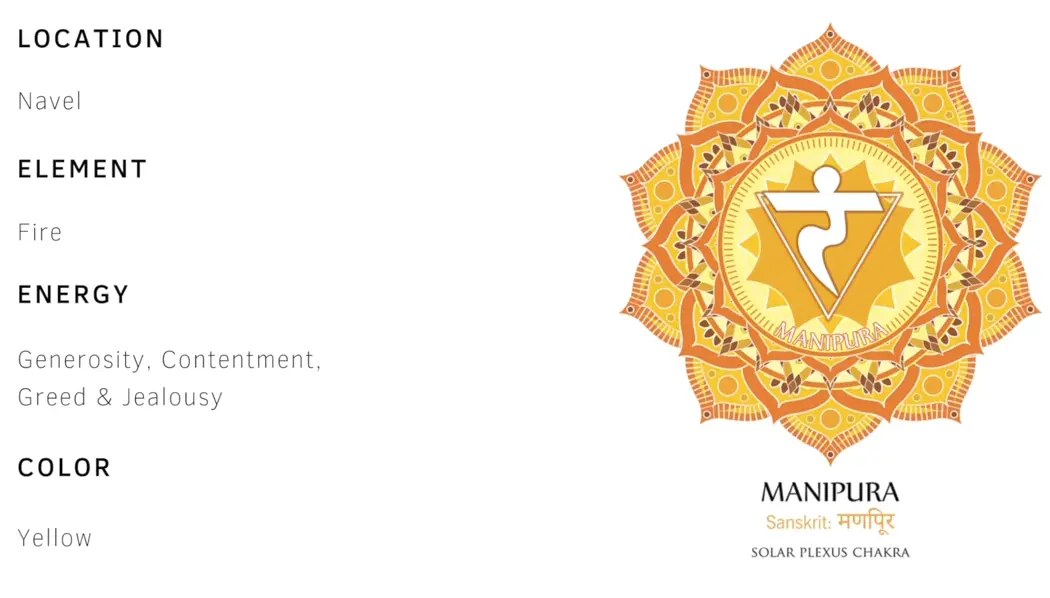
Location – Navel
Element – Fire
Energy – Contentment, Generosity, Greed, and Jealousy
Steady Energy of Manipura– It will produce contentment and Generosity in you.
Unsteady Energy of Manipura—People with unstable Manipura tend to become intolerant of those with a lot, which produces jealousy. They also feel they should have the maximum, leading to Greed.
4. Anahata Chakra (Heart Chakra)
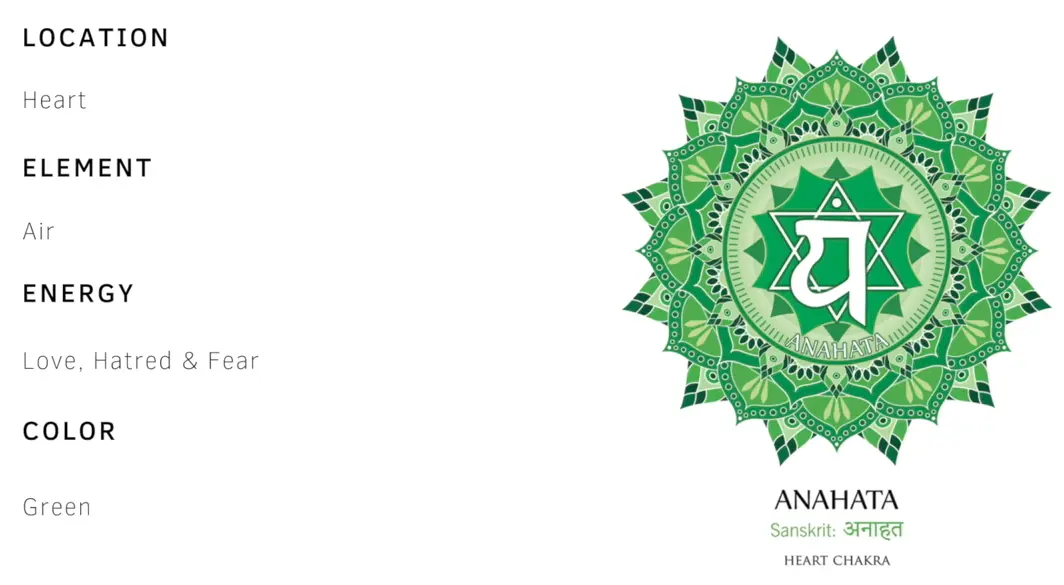
Location – Heart
Element – Air
Energy – Love, Hatred, and Fear
Steady Energy of Anahata– There will be unconditional love. A person with a stable Anahata will never demand love or try to squeeze love out of another person or being.
Unsteady Energy of Anahata– There will be hatred and fear. If the mind is in the past, there will be hatred. If the mind is in the future, there will be fear.
5. Vishuddhi Chakra (Throat Chakra)
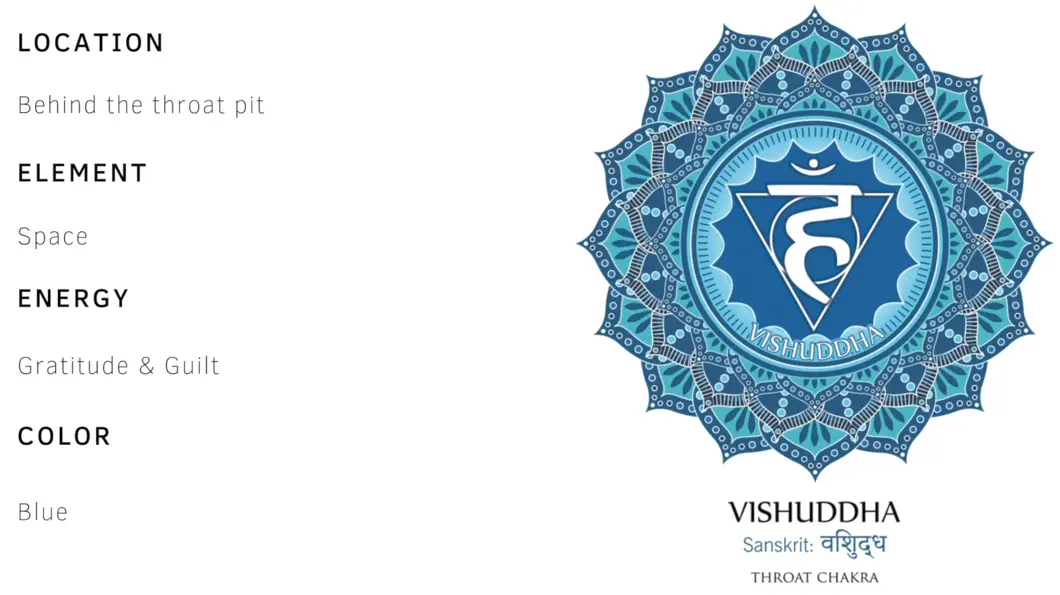
Location – Behind the throat pit
Element – Space
Energy – Gratitude
Steady Energy of Vishuddhi – You become grateful.
Unsteady Energy of Vishuddhi – You feel guilty.
Whenever you feel guilt or gratitude, you will cry. A person feels choked in the throat whenever they cry.
6. Agya Chakra (Third-Eye Chakra)
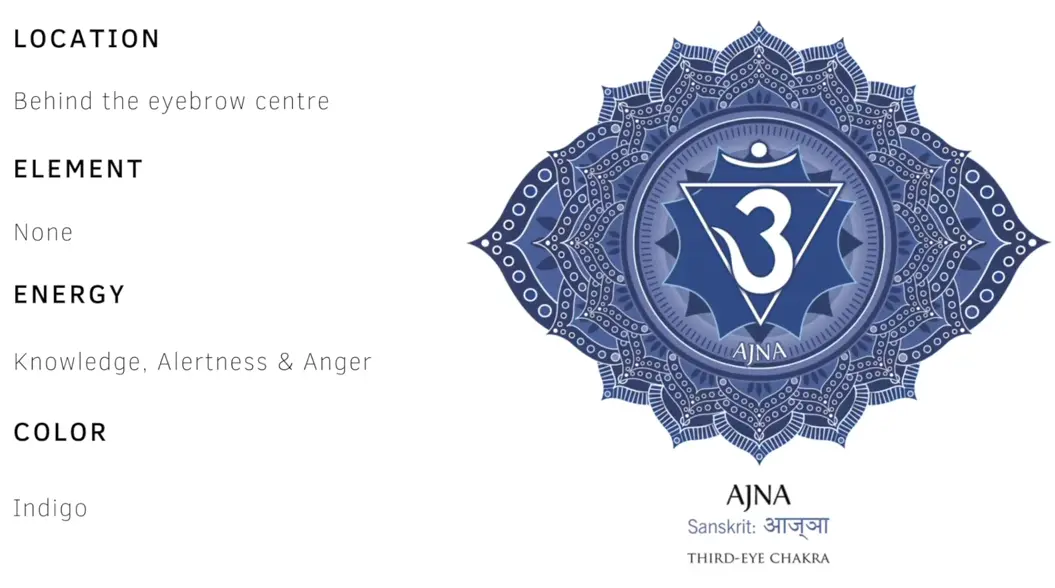
Location – Behind the Eye-Brow Centre
Element – None
Energy – Knowledge, Alertness, and Anger
Steady Energy of Agya: The person becomes wise and knowledgeable, too. Awareness and alertness heighten. Everything magnifies in your body.
Unsteady Energy of Agya — Some people tend to seek perfection. If something goes wrong, they explode with anger. Those people have unstable energy of the Agya Chakra.
7. Shahara Chakra (Crown Chakra)
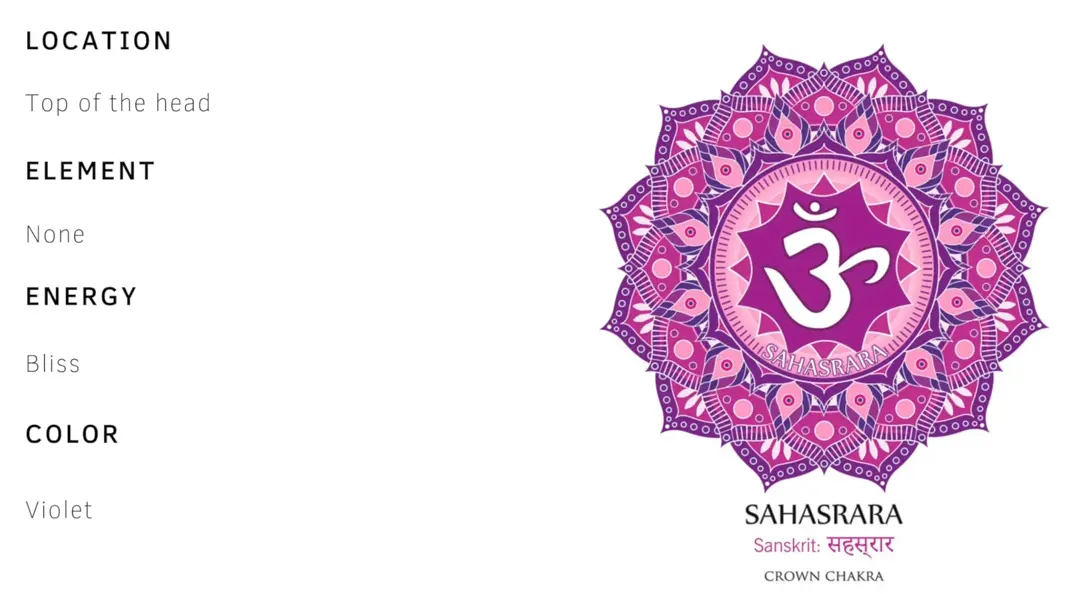
Location – Top of the head
Element – None
Energy – Bliss (Ananda)
(Bonus)Yapini Chakra
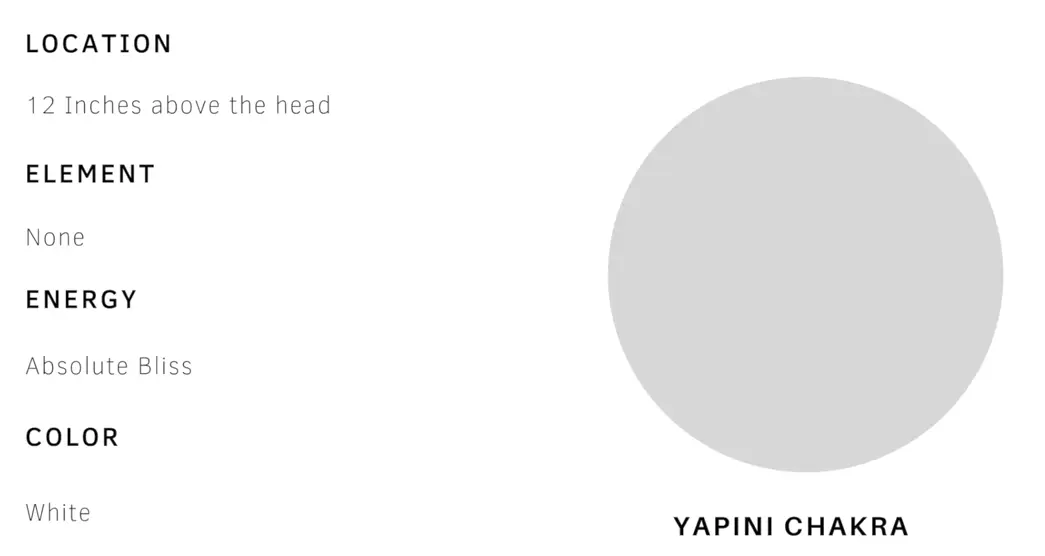
Location – 12 inches above the head
Element – None
Energy – Bliss Absolute (Paramananda)
Essential Insights About 7 Chakras In Yoga for Beginner Yogis
One requires stillness, steadiness, patience, and awareness in all the chakras. It’s not like these are different emotions; the same energy takes various forms.
Everything gets activated like a rocket. You have to be consistent in your meditation, Yoga and Pranayama. This is the only solution. Whenever you practice yoga, your chakras are activated. It will ripple effect your Gross, Subtle, and Causal dimensions.
Prana or Chi flows better on a yoga mat. Whenever you don’t feel like doing Yoga, that is the only time you need it most. Everything will go together- Yoga, Meditation, Pranayama, Ayurveda, and Chanting. The practice of yoga is like a protective shield around your body.
There are practical methods for achieving chakra balance, including meditation, breathing techniques, yoga asanas, sound therapy, crystal healing, and aromatherapy.[2]
Which Yoga Exercises Activate Which Chakras?
Agya Chakra– Whenever you do the eye exercises in Yoga (Suksham Vyayam), it activates your Agya Chakra.
Visudhi Chakra– Whenever you do neck exercises, you work on your Visudhi.
Anahata and Manipura Chakra– You involve these two chakras whenever you engage your shoulders, arms, or the spinal twist in yoga exercises. A little bit in Manipura and most of it in Anahata.
Manipura and Swadhistan Chakra– Whenever you do forward bends and backwards bends, butterfly exercise in yoga, cradle pose or lower body asanas or openings. You work on Manipura and Swadhishthana.
Conclusion
Everyone starts somewhere or at some moment; you are not late. The same universal energy in each chakra is always working. The aim is to make the energy steady or stable from unstable in each chakra; this is the journey of Yoga. One can also use the words balanced or unbalanced energy.
The information shared here is merely a basic dose of yoga. It will get you started. However, a right yoga teacher should always be preferred.
Recognising the symbolic depth of chakras while embracing their potential as tools for mental and physical well-being allows us to harmonise ancient wisdom with modern insights, providing a more comprehensive understanding of these intricate energy centres.[3]
Reference
[1] C Patil V, Vyas P. Ayurveda concept of Yoga Chakras and their Anatomical aspects. HJHS [Internet]. 2Aug.2022 [cited 7Jul.2025];7(2):25-8. Available from: Link to Study. <Go to Citation>
[2] DR. NAMRATA REDKAR HARMONIZING THE ENERGY WITHIN: AN IN-DEPTH STUDY ON THE 7
CHAKRAS AND EFFECTIVE METHODS FOR UNBLOCKING (AARF) (ISSN) [Internet]. [cited 2025 Jul 7];46:2349–4077. Available from: Link to Study. <Go to Citation>
[3] Verma S, Srivastava M. International Journal of Research Publication and Reviews Chakras: A Comparative Review from Modern and Traditional Perspectives of Holistic Health. International Journal of Research Publication and Reviews [Internet]. 2023;4(9):1616–9. Available from: Link to Study. <Go to Citation>

